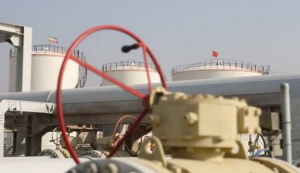
THE World Bank cut its 2016 forecast for crude oil prices to 37 U.S. dollars per barrel and foresaw other commodity prices to shed further this year due to weak demands from emerging economies.
In its latest Commodity Markets Outlook report, the bank said the lower forecast reflects sooner-than-anticipated resumption of exports by Iran, greater resilience in U.S. production and weak growth prospects in major emerging market economies.
Oil prices fell by 47 percent in 2015. However, a gradual recovery in oil prices is expected this year since the demand is expected to strengthen somewhat with a modest pickup in global growth.
“On a conjectural basis, we do think there’s some over-reaction in the oil market in a sense that the oil prices went down a little more than one might have expected. We have examined all the reasons and indeed there are many reasons why oil prices went down, but we could not find one single reason that push them so hard now,” said John Baffes, senior economist of World Bank and lead author of the Commodities Markets Outlook.
The oil industry in North America has proven itself to be more robust than previously expected by continuing to pump despite the weaker prices, but the World Bank predicts there will be more production cuts in 2016.
The report also examines the possibility of slower growth in China which could lead to more downward pressure on the commodity market. It will affect not only the oil but a whole range of commodities, which accordingly will hit hard many African commodity exporters.
“Africa is a probably region that has been diversified the less compared to other regions of the world, so it relies on a lot of primary commodities. And given that, as I said earlier, we see a decline in commodity prices across the entire spectrum, it’s going to face perhaps more headwinds than other regions of the world,” said Baffes.
There are also concerns in the report about whether the intervention of the government to further support their farmers during this downturn could lead to even lower prices for commodities like maize. (Courtesy China Central Television)







